Abstract
This article by Future Hackney and the Gillett Square Community in London creates a new space for urban documentary work through a participatory project and collaborative authorship. The co-authors of the project are the photographers and the people depicted in the photographs, who also speak through the captions, allowing a wider definition of the auteur. Traditionally documentary photography involves one auteur, often male and an outsider. Wayne and I (Don Travis) are the photographers and we live and grew up around the areas we document and are therefore a part of the community that we engage and collaborate with. Future Hackney has spent the last four years working alongside residents to create images and oral histories of the Caribbean and African communities. This resulted in ‘Gillett Square Stories’ as a space of radical history through the Black experience and a living archive of memories and experiences, connecting past and present. The images and captions presented here express the rich stories of one inner London area that help explain our city’s post and present colonial history.
Future Hackney is a participatory arts project produced by Don Travis and Wayne Crichlow. We return with our third and distinctly different street exhibition—‘Gillett Square Stories’—about one of Dalston’s remaining working-class neighbourhoods. We combine documentary and co-authorship to create a hybrid genre of photographic storytelling.
Future Hackney has spent the last four years working alongside residents to create images and oral histories of the Caribbean and African communities. ‘Gillett Square’ is a space of radical history through the Black experience and a living archive of memories, experiences and stories, connecting past and present.
Future Hackney breaks with conventional documentary codes of one auteur through inclusion and co-authorship with the subjects. Set firmly in the city, we photograph and tell stories with the locals. We are interested in those people and groups on the streets that are not represented in the mainstream media. From urban communities to protest movements, we are documenting a London unseen.
We work with communities, groups and individuals over time, encouraging them to also learn about the value of oral histories and archival projects, using imagery. People love telling their story or stories about the places and spaces they grew up in, causes they are fighting for and their sense of belonging to parts of the city. Much of our media is dominated by an elite whose stories are often predictable and value wealth and status. However, stories of diaspora or protest and resistance are reflective of a deeper and more thoughtful public realm. Our photography works on the same principle of dialogue and inclusion alongside workshops with inter-generational groups. The street portraits we produce are created with our co-authors and also tell a story of the space.
By co-authoring with the subject, we widen the definition of the auteur. So we photograph the subjects professionally and record their oral histories, then reach out to edit with them. This creates trust and inclusion and we get better stories. They are then given credit and bursaries for their time and effort. This approach has been really successful and gives people ownership and an understanding of the importance of their own history and the communities.
Once shared on our social media platforms @futurehackney (Instagram) and www.futurehackney.com, we exhibit our work on the street. As large format photographs in key locations, we encourage the public to engage and provide feedback on our street exhibitions. They are available 24/7 and are for everyone.
Ridley Road is a gritty one mile-stretch of low buildings with a well-known market and small independent shops that cater for the local migrant and working-class locals. It houses a vibrant mix of life and is a social and public space for communities. Gillett Square is opposite Ridley Road, and is a social space for the same communities who meet there to socialise, get support or belong. The spaces encapsulate East London’s rich diversity, activism and post-colonial history, now a rapidly changing demographic as creeping real estate moves in.
Through digital and film street photography, iphoneography, documentary observation, oral histories story-telling, pop up photographic studios, polaroid film workshops and street photography exhibitions, we have produced multi-media content, about the diasporic and marginalised communities. The space is a microcosm of a growing global trend that could be interpreted as the ‘managed decline’ of a historically ethnic and working-class space.
However, this latest exhibition focuses on many of the young people and those who find belonging there, as a space re-imagined … Gillett Square Stories street exhibition is up for the next year and can be found at Red Cross, 92 Dalston Lane, London E8 1NG.
The images and stories we co-author are united through participants’ connections to Gillett Square and Ridley Road in Dalston. Their life stories unite through shared histories that include diaspora, national borders, The Black Atlantic, double consciousness, Pan Africanism and Post-colonialism. The intergenerational stories include histories of personal struggle, such as mental health, the foster care system, gender norms, structural and institutional racism and sexism as experienced by the individual. Photo by Wayne Crichlow.
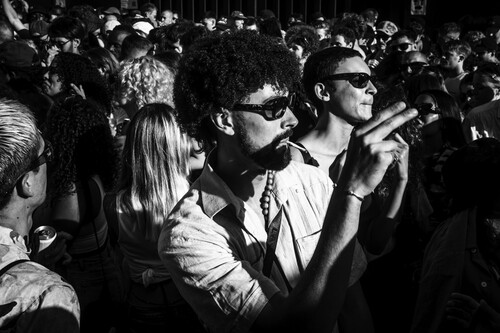
‘I came to the UK a year ago from Monserrate, a small island in the Caribbean. I walk my friend’s dog Cabanna and get to chat to people in the square. I used to look after dogs back home so this gives me a sense of belonging.’ Joshua. Photo by Don Travis.
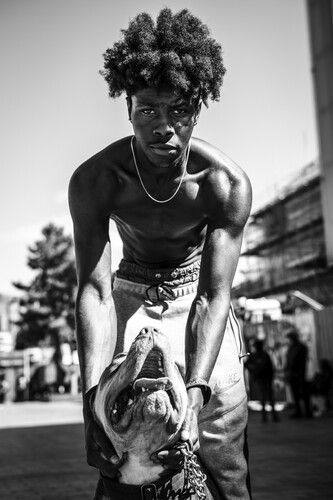
Future Hackney are reinventing documentary through continuous engagement and street workshops with young people and intergenerational groups. People are included and encouraged to share their stories and images in their own way. Photo by Don Travis.
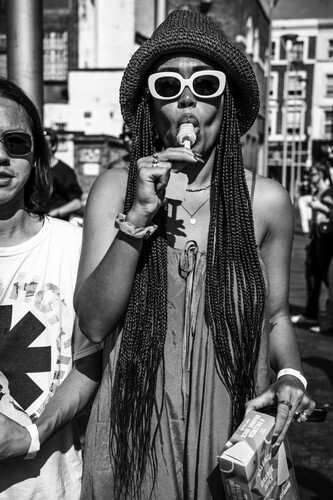
‘At the age of eleven I carried a handgun. A magnum, which my bredrin’s gave me to me to protect mum and the cousins. I never used it and never wanted to, but I was the one who had that responsibility, as dad had left. Growing up in Waterhouse ghetto was tough love, so at the age of 19 I arrived in a bitterly cold London and got my first job on Ridley Road.’ Half Pint. Photo by Don Travis.
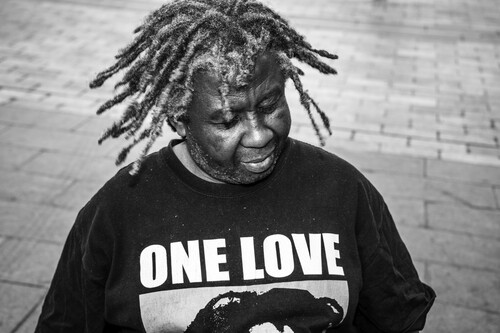
‘I blew up in music when I was 21 years old, with my music partner at the time. We were the first two females to pass three million views in drill music, so we made history and trended. Drill music originated in southside Chicago depicting the area’s challenging environment. I like to talk about issues that affect women including colourism and abuse.’ Abigail Ashante. Photo by Don Travis.
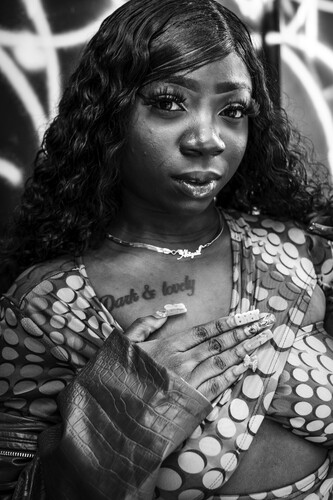
‘I’m dead against stop and search … It’s counterproductive to the community. I’ve been stopped and searched around 60 times in my life. Certain ideologies that were created during colonialism were used to negate Black people who are still struggling with those labels.’ Clapper Priest. Photo by Wayne Crichlow.
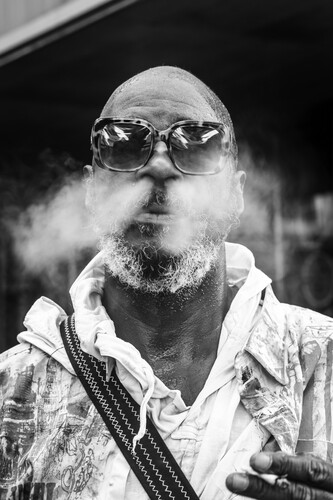
Dalston was like a magnet for the Black and working-class communities back in the 1980s with shebeens and parties weekly. Many of these communities found refuge in the area with venues like the Four Aces, Centerprise and Cubies. Photo by Wayne Crichlow.
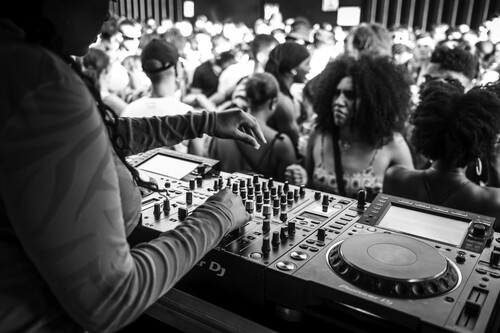
Gillett Square is a microcosm of a growing global trend that could be interpreted as the ‘managed decline’ of a historically ethnic and working-class space. Photo by Don Travis.
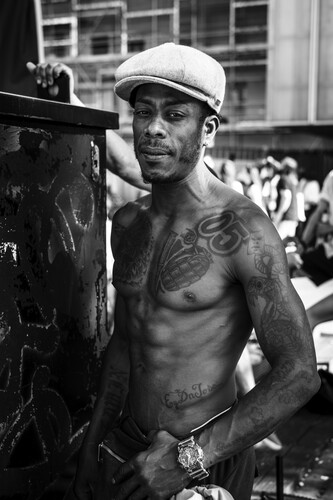
Gillett Square has a complex past of Black and working-class history, police brutality and structural racism. However, in recent years it has become a vibrant space with regular events and young voices. NTS Radio and Albion HiFi alongside other music organisations hold events there. Photo by Don Travis.
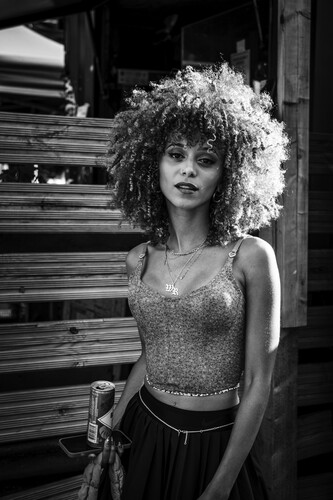
‘The first time I experienced racism was at Notting Hill Carnival. It was 1977 and there was a lot of tension in the air. Something kicked off and the police grabbed me and pushed me up against a van. I could hear people shouting ‘let him go, he’s just a kid’. First one or two, then it sounded like fifty people. They backed off and I went my own way. This was my first understanding of the power of community.’ Keyo. Photo by Wayne Crichlow.

Gillett Square has always been a space for music lovers, artists, writers, drifters, kids, cool people and those who like to shine. Photo by Don Travis.
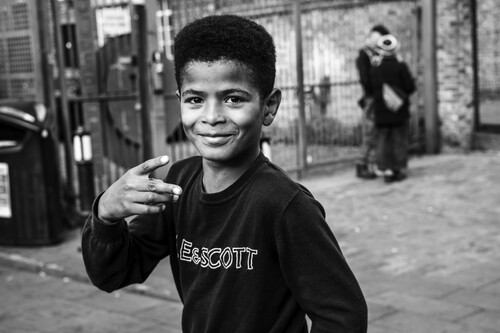
‘My story goes from care home, to street, to prison. People get paid to foster and sadly many of them do it for the money, not because they love troubled children. I never got hugs or much love, so I wasn’t ever sure what that kind of love actually was? I never got birthday cakes or celebrated with people. I would like to raise awareness of the care system and how much neglect there is. Sometimes in life you don’t get to choose what you do, how you make a living or how you survive. If I had a choice I would have been a posh kid and lived the good life and gone to university and got something out of life, the right guidance, the right support and the right mentors.’ Tony. Photo by Don Travis.
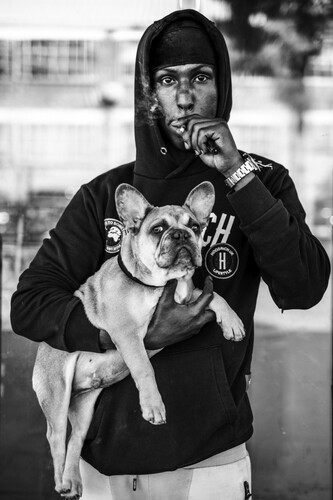
Future Hackney aims to make art and photography inclusive, removing it from the traditional white box and onto the streets where it becomes part of the fabric of the city. Photo by Wayne Crichlow.

‘Growing up locally we understood the relevance of the Gillett Square as a place where stories can be told, shared, documented and preserved as part of London’s history.’ Wayne Crichlow and Don Travis. Photo by Wayne Crichlow.
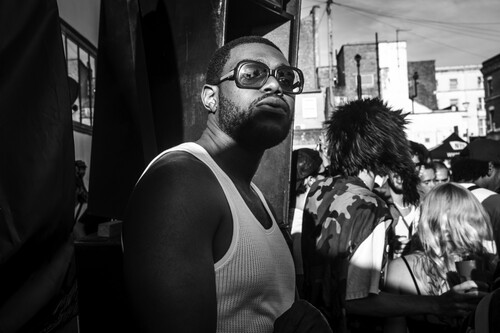
‘I became addicted to heroin about two years ago and I am trying to get out of it. Addiction is about pain not drugs. People in Dalston look out for me and understand why I am going through this.’ Dillon. Photo by Don Travis.
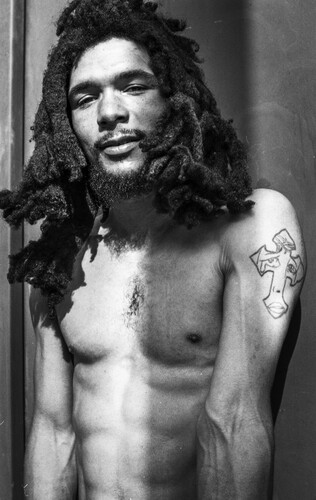
‘I’m a local music artist who produces and writes all my own work. My music is a range of genres and I spit my own lyrics. Really it was grime music to begin with. Grime music really resonated with me because it embodied a lot of the anger and confusion that I was going through. I’ve worked with JME, Boy Better Know, Skepta and Wiley. But right now, I’m just trying to do it by myself.’ SBK. Photo by Don Travis.
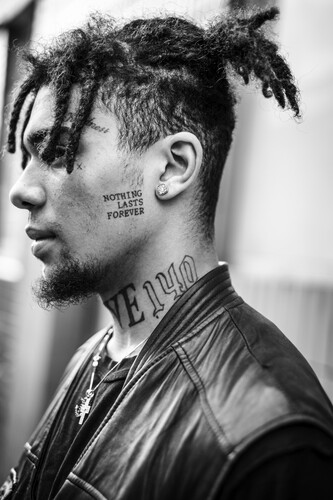
Acknowledgements
Supported by National Lottery Community & Heritage Funds, Hackney Council, Hackney Co-operative Developments, The Weavers Company, London Unseen (Mayor of London’s Commission for Diversity in the Public Realm) and NTS Radio.
Disclosure statement
No potential conflict of interest was reported by the author(s).
Additional information
Funding
Notes on contributors
Don Travis
Don Travis has a background in documentary photography, urban visual arts and community. Email: [email protected]
Wayne Crichlow
Wayne Crichlow is a photographer and has a connection with the communities we document. Email: [email protected]
To explore more visit Instagram @futurehackney and www.futurehackney.com
